2005 Airman of the Year
honorable

Senior Airman John Chege
Chege was the lead driver in a convoy to Tikrit, Iraq, last summer when a roadside bomb exploded beneath his truck, killing his gunner.
Despite numb legs and collapsed lungs, Chege had to be held down; he wanted to help his squadron disable an oncoming car charging at them, his supervisor said.
Chege, a Kenyan citizen, lost five friends in the bombing of the U.S. embassy in 1998. That played a role in his enlistment "to be a part of people making a difference and try to stop the terrorism," he said.
Chege received a Purple Heart and the Army Commendation Medal. He was back on duty in four months. Prior to his deployment, he volunteered with Adopt-A-Highway and at a local veteran's hospital.
2005 Airman of the Year
honorable

Master Sergeant David Blakley
Blakley braved dark, 40-degree water to save fellow passengers of a water taxi that flipped in Baltimore Harbor in March 2004.
He rescued a crewmate and a woman who had drifted from the boat while fellow guardsmen pulled people from the water.
Deployed for Operation Noble Eagle, Blakeley and three other guardsmen were returning from a tour of Fort McHenry when a fast-moving thunderstorm hit. Staff Sgt. Luis Nazario said Blakeley was the last passenger lifted from the water.
"Under that emergency situation, he was able to keep his leadership," Nazario said. "We don't have any doubt that he's got what he needs to hold that rank."
At home, Blakeley volunteers as a handyman for his church and serves on a sports committee at his sons' school.
2005 Airman of the Year
winner
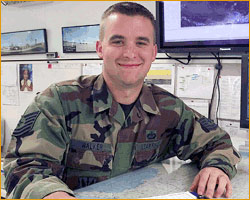
Tech. Sgt. Paul Walker
Age 30. Joined the Air Force in 1993. Married Brooke in July 2004. Hobbies include golf, hockey and cooking.
DAVID-MONTHAN AFB, Arizona - To his supervisors, Technical Sgt. Paul Walker is a battle-tested leader, an innovator, a professional and a problem solver with a knack for making improvements.
The combat weather forecaster is also an avid cook who baked dozens of cookies over the holidays last year for airmen in the dorms.
"The best thing about Paul is he's self-motivated and he's got the brains and leadership skills to back it up," said his flight chief, Master Sgt. Heidi Bondi.
During his 101-day deployment last year to Balad Air Field, Iraq, the base came under attack 92 times. To help protect the area, Walker filled and stacked more than 20,000 sandbags. Even amid the violence, he remained "confident and directive" as the noncommissioned officer in charge of a team of eight, said his flight commander, Capt. Marc Gasbarro, who heard feedback from troops.
When Walker deployed to Bagram Air Base in August 2002, in support of Operation Enduring Freedom, he had little to work with. The Taliban had destroyed all meteorological records. So Walker implemented a program to collect and organize weather data, conducted a wind study and created a forecast template that is used there today, Bondi said."He's always going to a place and making it better," she said.
Walker said he grew up an "Air Force brat." His father, who retired as a master sergeant in 1991, was one of the reasons he decided to enlist in 1993. Weather forecasting, a field in which every day is different, appealed to his competitive side.One of his proudest moments came in 1999 when he accurately forecasted a tornado would hit Altus Air Force Base, Okla., in 15 minutes; 10 minutes is the desired lead time.
He's also known nail-biting moments. He was on the midnight shift at Balad when a quick-reaction force needed a weather report while responding to to a downed helicopter. In eight years, he'd never had a weather-related aircraft incident. He waited for two hours, nervous for the crew and the forecast, until finally hearing "mission complete."
"My nature is, I want to make sure it's right," he said.
At home, Walker created two new programs, moving his team from pen-and-paper surveys to databases and points systems. One tracks the accuracy of daily forecasts, showing management what areas need improvement. His accuracy rate was 88 percent last year; 75 percent is standard. The other measures operational forecast accuracy against the weather pilots encountered.
The programs prompted kudos from Air Force auditors, who called Davis-Monthan "the only base doing it the right way."
Because of another program he built and led, according to his supervisors, Davis-Monthan earned Air Combat Command's first-ever score of 100 percent on the mobility portion of the Air Force weather standards and evaluation program.
Walker said he hopes to enter officer training school or become a chief master sergeant.
Forty hours short of a bachelor's degree in natural science and mathematics, Walker holds a 4.0 grade point average. Last year he took part in the base's "Santas in Blue" program, giving toys to children.
In 2004, he was the NCO of the year for his base and ACC's Weather NCO of the year. He's also received two Army Commendation medals and two Army Achievement medals.
Despite the accolades, his ego remains in check, Gasbarro said.
He received the news of his "Airman of the Year" award amid about 10 commanders who clapped as his face turned red, his voice choking out, "Thank you very much."
"He's the best airman, capital A, that I've ever seen," Gasbarro said.
2005 Sailor of the Year
notable

SK1 (SW) Barry Melvin
Melvin, a storekeeper, coordinated, trained and led 30 reserve personnel to support logistical require ments for 40 U.S. and allied ships during the Rim of the Pacific Exercise 2004. He arranged all aspects of support, including loading more than 4,000 pallets of provisions.
2005 Sailor of the Year
notable
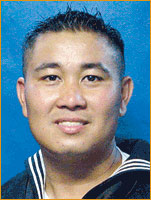
CS1 Sancho Poblete
As community relations leader on the Denver's Persian Gulf deployment, Poblete, a culinary specialist, helped coordinate the command's United Through Reading program to help more than 400 sailors and Marines stay connected to their children by reading books aloud on tape.
2005 Sailor of the Year
notable
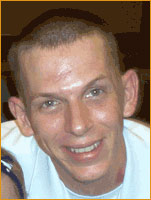
EN2 Timothy Carlton
On April 24, 2004, Carlton, an engine man, was injured during a maritime intercept when a dhow exploded near a major offshore Iraqi oil terminal. After months of recuperation, Carlton re-enlisted for three more years in October 2004.
2005 Sailor of the Year
honorable

CTI2 Casey Tibbs
Casey Tibbs could have given up on a Navy career when he lost a foot in a motorcycle accident in 2001. But he successfully petitioned to stay in the Navy and "just made myself go back to being a regular sailor," he said.
An athlete since high school, Tibbs trained six days a week to qualify for the 2004 Paralympics in Athens, Greece, where he won a gold medal in the 4x100 meter relay and a silver medal in the P44 pentathlon.
When he returned from Athens in November, Tibbs looked for a new challenge - so he applied for an analyst billet in Afghanistan. He deployed in March. Although he brought an extra prosthetic leg, he said he's treated just like everyone else.
"I don't walk with a limp. I can run, and no one gave me any fuss," he said.
2005 Sailor of the Year
honorable
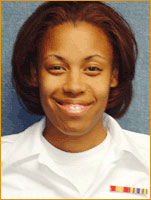
AT2 Tiffany Warren
Tiffany Warren makes the most of her time, on duty or off.
On the job in the air traffic control division at Naval Air Facility El Centro, Calif., Warren helped train five fellow sailors in various air traffic controller jobs, all while studying for her own qualifications and working her own air traffic controller shifts.
She also voluntarily helped review the air traffic control division's operating manuals.
On her own time, she stays extremely busy in a variety of volunteer roles in her local community. Warren said she decided after reporting to El Centro, her first duty station, that she would contribute her time wherever she could - as a sailor or a citizen.
"I just think it's something we owe to the community and the military, to give back," she said.
2005 Sailor of the Year
winner
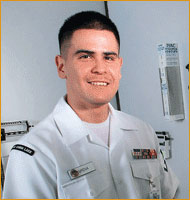
HM3 Victor Urena
20 years old. Purple Heart recipient. Veteran of 50 combat missions and 100 combat patrols in Iraq.
CHINA LAKE, Calif. - When Victor Urena enlisted in the Navy two years ago, he expected to train to become a hospital corpsman, then land at the Navy's base at China Lake so he wouldn't be far from his Downey, Calif., home.
But a conversation Urena had soon after boot camp showed him a new path, one that would take the sailor far from China Lake and onto the battlefields of Iraq.
Urena was waiting for the flight that would take him to Corpsman School when a first-class hospital corpsman approached him to chat. The younger sailor noticed a striking pin on the petty officer's chest.
"You want the FMF pin, you go green side," the petty officer told him of the pin designating him a Fleet Marine Force warfare specialist.
Urena's recruiter hadn't told him about the Navy's relationship with the Marine Corps. The petty officer "told me about the Marines — there's green side and there's blue," he recalled. The conversation "kind of motivated me."
Flash forward one year: Urena is "Doc" to a platoon of young Marine grunts. He's a Purple Heart recipient, a veteran of 50 combat missions and 100 combat patrols. Urena and "his" Marines were members of 2nd Battalion, 4th Marine Regiment — the "Magnificent Bastards" — the Corps' infantry battalion that suffered more casualties than any other in Iraq. His talents, training and courage helped save lives.
Urena could hardly know two short years ago the horrors of combat he'd face. He didn't know he'd be the one whom the young grunts from Echo Company 2/4 turned to when enemy mortars and bullets rained down on them.
Urena had expected to do a full tour at China Lake when he reported as a seaman recruit in June 2003. "This is the fleet," he thought at the time.
But after a few months, he was chosen for "green side" duty. In Iraq, Urena instantly connected with Hospital Corpsman 3rd Class Fernando Mendez-Aceves, 27, also with Echo's 3rd Platoon. They were like twins, and he often was mistaken for Mendez, even after Mendez's death in an ambush on a Ramadi street.
April 6, 2004, is one day of several vividly etched in Urena's memory. That morning, he saw his friend at the battalion aid station at their combat outpost base.
"I said, 'Hey, man, see you back. We'll chill out tomorrow,'" he recalled.
But several hours later came word to the battalion aid station: 12 KIAs.
When an Army Abrams tank unexpectedly arrived, Urena dove inside to help wounded soldiers.
"It was the first time I saw trauma," he said. He hoped he wouldn't freeze
"Then the Humvee came," he said.
Corpsmen jumped into the Humvee, pulling the bodies to check their pulse. It was 3rd Platoon. Amid the casualties, Urena recognized Mendez's chain and cross tattoo.
"The last person I saw was Mendez," he said. "I was just shocked."
His homecoming was bittersweet. After Mendez's death, Urena comforted himself by running his finger over his bunkmate's nametape, etched on white medical tape on a wall in their combat outpost building. He realized that he forgot to remove it before he left Iraq. Iraq, he said, was "like a dream," but also "a nightmare." He is a changed man.
"If it weren't for the Marines," he said, "I would not be here."
Urena, now an E-4, tends to patients and records at the Branch Medical Clinic at China Lake. Chief Hospital Corpsman Gregory Nielson who nominated Urena for Sailor of the Year, described him as a "top performer" and noted his work at the clinic since his return.
Urena counsels young sailors that "the corpsman rate is the best in the Navy. It's one of the few rates where you see combat."
These days, he's studying for his FMF pin, thinking of going to the green side.
"I'm a grunt corpsman," he said confidently. "I'm a corpsman, no ifs, ands or buts."

